
The genotype–phenotype distinction is drawn in genetics. "Genotype" is an organism's full hereditary information. "Phenotype" is an organism's actual observed properties, such as morphology, development, or behavior. This distinction is fundamental in the study of inheritance of traits and their evolution.

Annay is a commune in the Pas-de-Calais department in the Hauts-de-France region of France.

Courrières is a commune in the Pas-de-Calais department in the Hauts-de-France region of France.
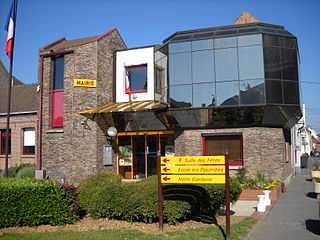
Dourges is a commune in the Pas-de-Calais department in the Hauts-de-France region of France.
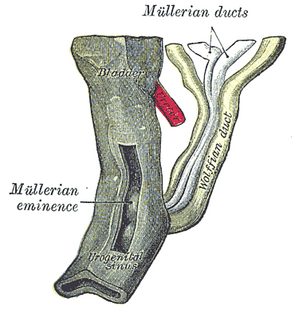
The urogenital sinus is a part of the human body only present in the development of the urinary and reproductive organs. It is the ventral part of the cloaca, formed after the cloaca separates from the anal canal during the fourth to seventh weeks of development.

The Kissimmee River is a river in south-central Florida, United States.

Rio Comprido is a neighborhood located in the center (Centro) of Rio de Janeiro city, in Brazil. It borders the Catumbi, Estácio, Praça da Bandeira and Tijuca neighborhoods.
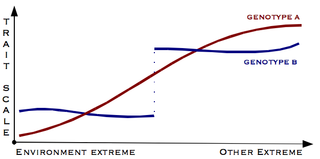
Canalisation is a measure of the ability of a population to produce the same phenotype regardless of variability of its environment or genotype. It is a form of evolutionary robustness. The term was coined in 1942 by C. H. Waddington to capture the fact that "developmental reactions, as they occur in organisms submitted to natural selection...are adjusted so as to bring about one definite end-result regardless of minor variations in conditions during the course of the reaction". He used this word rather than robustness to take into account that biological systems are not robust in quite the same way as, for example, engineered systems.

River engineering is the process of planned human intervention in the course, characteristics, or flow of a river with the intention of producing some defined benefit. People have intervened in the natural course and behaviour of rivers since before recorded history—to manage the water resources, to protect against flooding, or to make passage along or across rivers easier. From Roman times, rivers have been used as a source of hydropower. From the late 20th century, river engineering has had environmental concerns broader than immediate human benefit and some river engineering projects have been concerned exclusively with the restoration or protection of natural characteristics and habitats.
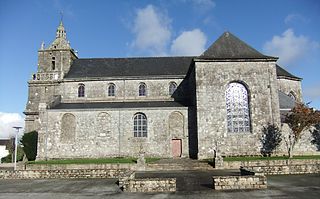
Laz is a commune in the Finistère department of Brittany in north-western France.
Genetic assimilation is a process described by Conrad H. Waddington by which a phenotype originally produced in response to an environmental condition, such as exposure to a teratogen, later becomes genetically encoded via artificial selection or natural selection. Despite superficial appearances, this does not require the (Lamarckian) inheritance of acquired characters, although epigenetic inheritance could potentially influence the result. Waddington stated that genetic assimilation overcomes the barrier to selection imposed by what he called canalization of developmental pathways; he supposed that the organism's genetics evolved to ensure that development proceeded in a certain way regardless of normal environmental variations.

Csorvás is a town in Békés county, in the Southern Great Plain region of south-east Hungary.

Courcelles-lès-Lens is a commune in the Pas-de-Calais department in the Hauts-de-France region of France.

Saint-Floris is a commune in the Pas-de-Calais department in the Hauts-de-France region of France.

L'Isle-d'Abeau is a commune in the department of Isère in southeastern France, thirty kilometres away from Lyon.

Harskirchen is a commune in the Bas-Rhin department and Grand Est region of north-eastern France.
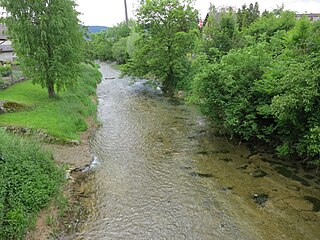
The Sissle is a 16-kilometre (10 mi) long river in the Swiss canton of Aargau in Switzerland. It is a tributary of the Rhine and drains the eastern part of the Fricktal. The largest town on the river is Frick.

The MERCI Retriever is a medical device designed to treat Ischemic Strokes. The name is an acronym for Mechanical Embolus Removal in Cerebral Ischemia. Designed by University of California, Los Angeles in 2001, MERCI was the first device approved in the U.S. to remove blood clots in patients suffering from acute brain ischemia.
The Canalizations of Zenobia or El Kanat are canals that according to traditions, were built by Queen Zenobia to channel water from the Orontes river in the Anti-Lebanon mountains to Palmyra. Remains of the ruins of the canals can be seen in places around Lebanon.
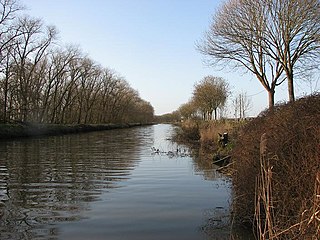
The Ieperlee is a canalized river that rises in Heuvelland in the Belgian province of West Flanders and flows via the city of Ieper (Ypres) into the Yser at Fort Knokke.
This page is based on this
Wikipedia article Text is available under the
CC BY-SA 4.0 license; additional terms may apply.
Images, videos and audio are available under their respective licenses.

















